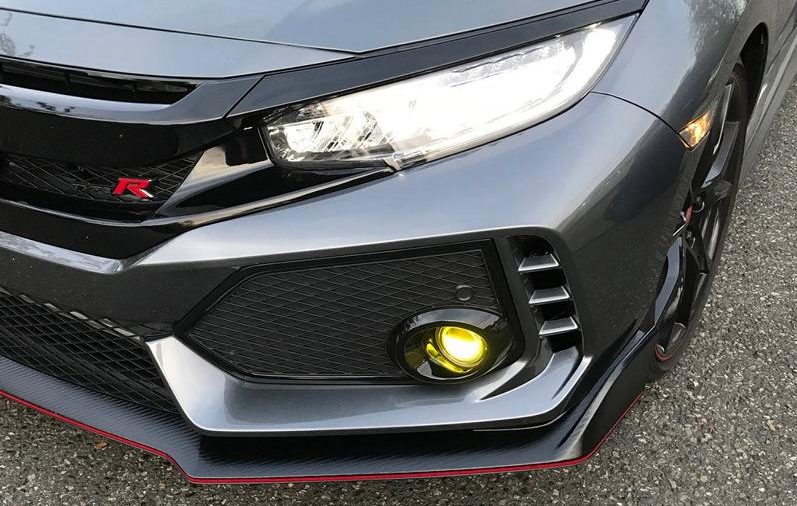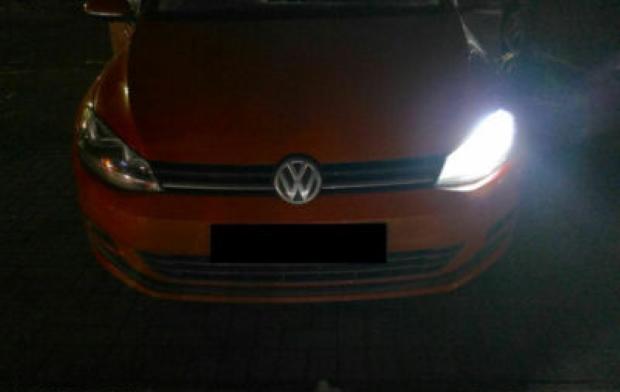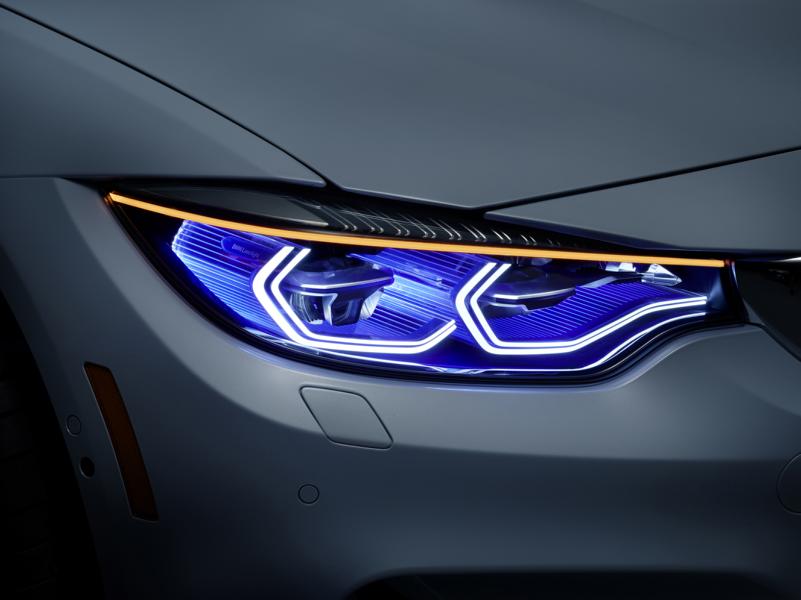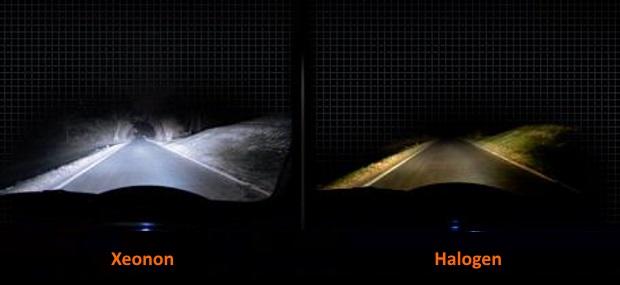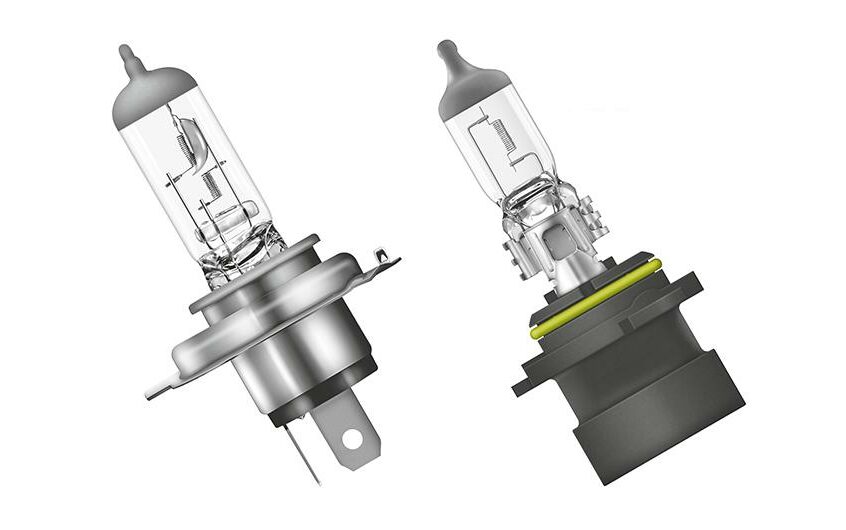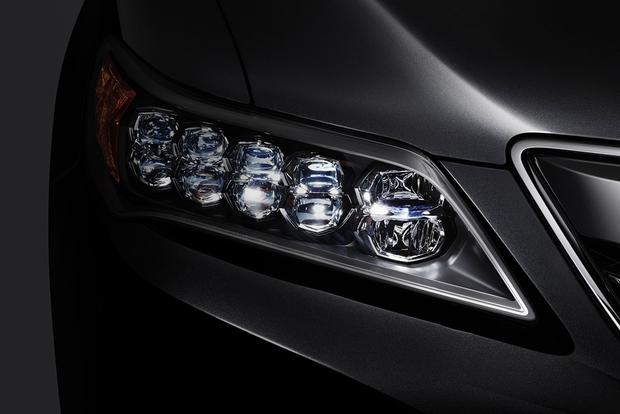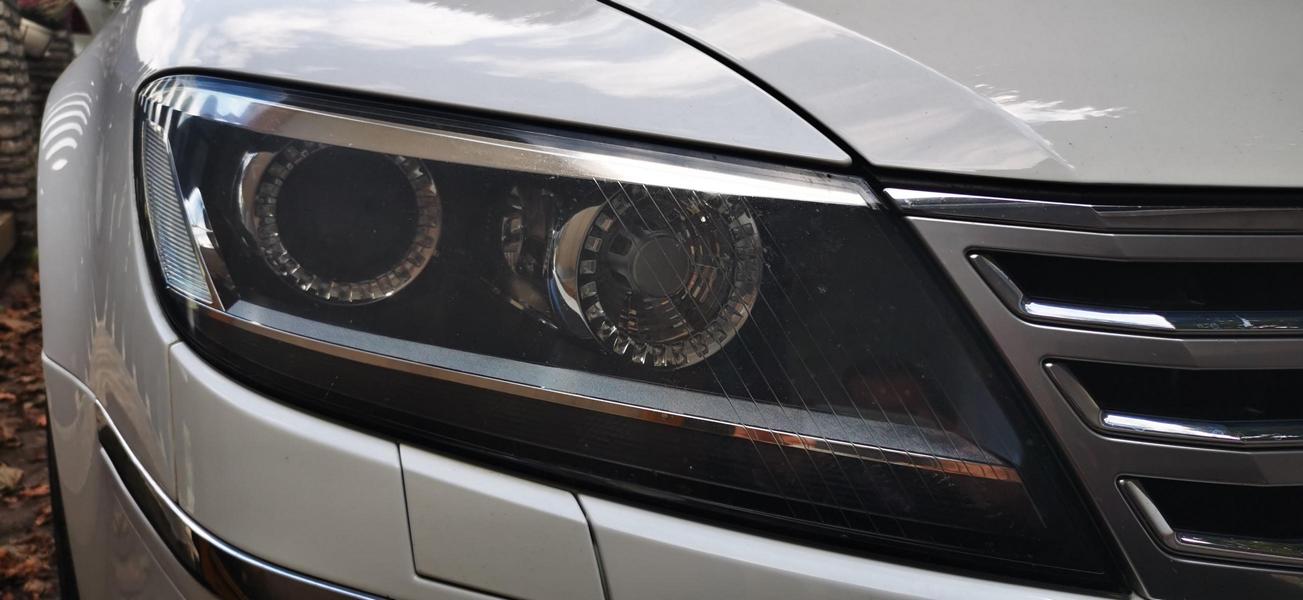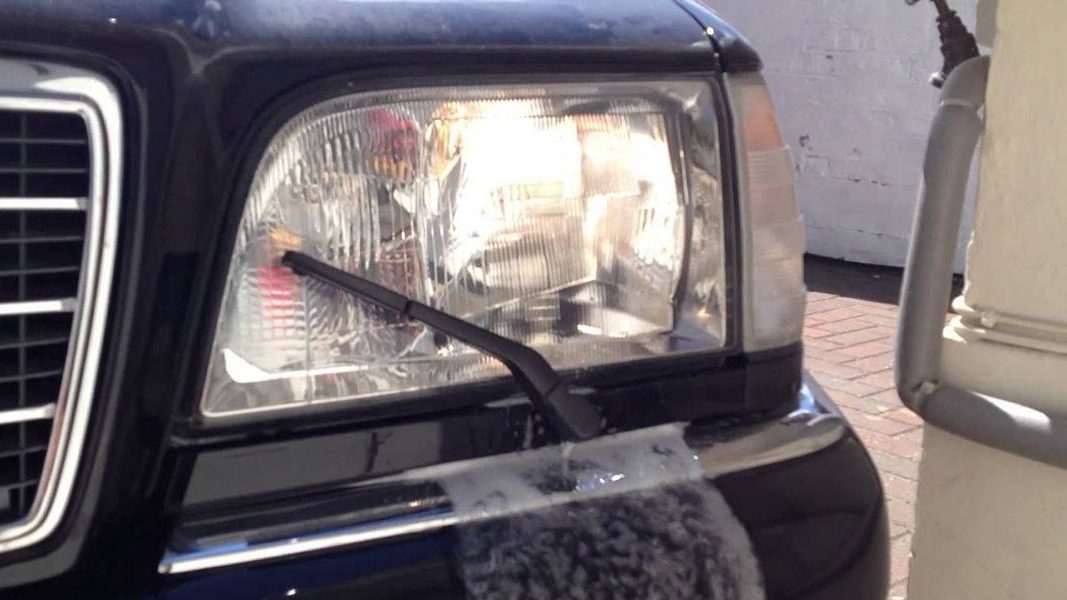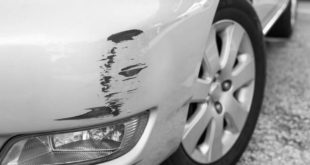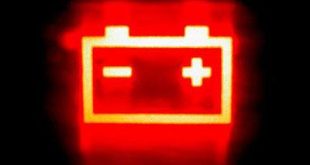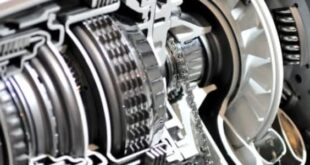Recently updated on May 29, 2021 at 08:03 p.m
A lot has happened on the subject of car headlights in recent years. There are different types of headlights depending on your own preferences. This has illuminated tuning blog and provides right after our big contribution around tuning - the changes to the vehicle lights, now general tips on the subject headlights .
Overview of the topics
 Who is only interested in very specific areas around the topic Headlights from halogen to LED to xenon interested, you can use the following jump labels to navigate directly to the desired topic with just one click. And just as quickly you can return to this overview from the selected menu item with just one click. However, we recommend our readers to always read the entire article. Some menu items are only really comprehensible and understandable once the complete information article has been read.
Who is only interested in very specific areas around the topic Headlights from halogen to LED to xenon interested, you can use the following jump labels to navigate directly to the desired topic with just one click. And just as quickly you can return to this overview from the selected menu item with just one click. However, we recommend our readers to always read the entire article. Some menu items are only really comprehensible and understandable once the complete information article has been read.
- Headlights have to work
- What tasks do the headlights on the car perform?
- How are headlights constructed?
- Halogen lights as a classic among headlights
- H7 or H4 - what's the difference?
- Xenon burner: only standard in the upper class?
- LED headlights: economical, durable, but expensive
- This is how matrix LED headlights work!
- Laser headlights as a benchmark?
- What do I need to pay attention to when purchasing?
- How are the headlights adjusted correctly?
- What to do if the headlights are fogged up?
- What to do if the headlights are yellowed
- Do the headlights need special care?
- What are the penalties for improper use?
Headlights must work properly
The subject of car headlights is usually only dealt with when they are broken. However, they are safety-relevant and should therefore never be underestimated. In poor lighting conditions, they illuminate the lane in front of the vehicle. At the same time, they ensure that other road users see your vehicle in good time. For this reason, it is important that the car headlights always work properly. The right attitude is also important for road safety.
- Tip: Does the headlight cleaning system no longer work? Our contribution "Headlight cleaning system defective? Do you have to pay attention to this?“Helps to find the problem.
It is therefore worthwhile to think about whether the surcharge for the much brighter xenon burner is worthwhile when buying a car. Or whether you want to rely on the particularly long-lasting, even better LED lights or even the laser light. Tuningblog explains what the differences between the individual headlight types are. (Back to overview)
What tasks do the headlights do?
Headlights are now much more than just a source of light. Light animations and special light signatures let them make a statement. However, they still take on their core tasks: Parking light, low beam and Highbeam. In addition, modern cars have a LED daytime running lights ( PS. We have a little guide on how to retrofit daytime running lights in our article "Retrofitting daytime running lights on the car" compiled for you). Often it is too Blinker part of the main headlight module instead of being installed separately. Fog Lightsthat are not installed in all models are often located further down and are installed separately. However, there are also main headlights built-in Fog lights. Modern headlights also offer their own assistance functions. An adaptive high beam or a dynamic one Headlights are among these assistance functions. But other assistants are also dependent on the function of the car headlights, namely the adaptive one Cruise Control and the Lane keeping assist. (Back to overview)
How are headlights constructed?
A basic understanding of the design of car headlights will help you understand the differences between each type of headlight. The headlight is generally understood to mean the entire component in the front. So both the case and everything that is in it. The housing serves to protect the illuminants and the components as well as their attachment to the vehicle. Lamps emit their light in all directions. That is why they are embedded in a reflector. The parabolic mirror ensures that the light collects and is directed in the appropriate direction. Namely on the road.
In the case of older cars, the headlight glass also contributes to optimal light distribution. Its structure ensures that the light is also scattered. The glass also serves to provide protection against moisture and external influences. Modern car headlights are instead covered with clear glass and actually only with plastic. In the case of xenon headlights, projection modules are used instead of reflectors. There is a lens directly in front of the lamp, which ensures that the light is directed in the right direction. The advantage of this projection module is that it is movable. This enables dynamic cornering lights. (Back to overview)
Halogen lights as a classic among headlights
Halogen headlights are simply installed as standard in almost all basic versions of the current vehicles. In contrast to xenon or LED spotlights, halogen lamps are cheap and easy to replace if they are defective. A specialist workshop is rarely necessary for the exchange. The halogen headlight works with a normal light bulb with a filament, which is also known as a filament. A halogen gas mixture is burned in it. The light from the halogen lamp is white to yellow. Depending on the headlight type, either one or two halogen lights for the low beam and high beam are built into the module. Your light intensity is good and ensures a safe journey. Nevertheless, it allows less good illumination than modern xenon or LED headlights. However, it can be worthwhile to install better lights in order to use the maximum effect of the halogen headlights. Because often only mediocre halogen lamps are installed ex works. (Back to overview)
H7 or H4 - what's the difference?
Most cars these days are equipped with H7 halogen headlights. Older models, however, often still have H4 lamps. The biggest difference between these two light sources lies in their luminosity. H7 light elements shine brighter than H4 lamps. In addition, the two differ in their design. H4 halogen lights have two filaments. One is responsible for the low beam, the other for the high beam. H7 halogen lights, on the other hand, only have one filament. That is also the reason why two headlights are used. One is for the low beam, the other for the high beam. It is therefore not possible to exchange H4 bulbs for the brighter H7 bulbs. Only a completely new headlight with H7 bulbs would be an alternative here. For common vehicles, there are certainly suitable headlights from third-party suppliers to replace the old lamps ECE test or ABE. And currently there is even one from Osram LED bulb for upgrade for vehicles with halogen headlights. (Back to overview)
Xenon burner: only standard in the upper class?
The light output of xenon headlights is greater than that of halogen headlights. The arc generated by the xenon headlight is around five times brighter than the filament of a halogen headlight. In addition, the light has a much greater range. This means that the street is illuminated much better. The color of the light is white and every now and then has a bluish or yellow tinge. It is thus similar to daylight. The service life of these lighting elements is four times that of a conventional halogen lamp. As gas discharge lamps, they generate an arc by burning xenon instead of using filaments. They are therefore also referred to as burners.
But the ignition is on High voltage that the on-board network cannot deliver. The car must therefore have a ballast that generates a good 25.000 volts. Nevertheless, halogen is often not completely avoided. Conventional halogen lamps are still often used for the high beam or the parking light. That too Cornering is still equipped with halogen bulbs in many vehicles. Only in the case of bi-xenon headlights, both the low beam and the high beam are generated using xenon lamps. The xenon burner (particularly bright versions such as the Osram Xenarc Night Breaker Laser) has many advantages. Since these are correspondingly expensive, for a long time they were only added to the basic equipment in upper-class models. This is still the case today. Although there is almost every small car with xenon light, it is by no means standard. If xenon is not included, the surcharge is for the subsequent integration including acceptance often in the four-digit range. (Back to overview)
LED headlights: economical, durable, but expensive
LED headlights are equipped with light emitting diodes instead of lamps. The individual diodes are arranged in modules for the different headlight tasks. The diodes can be controlled in such a way that assistance functions such as adaptive high beam are possible. The advantage of LED elements is that their light is only emitted in one direction. Therefore, reflectors or lenses can be dispensed with. Because the light does not have to be directed onto the road. The light output of LED headlights is high compared to other types of headlights. They emit ten times as much light per watt as classic halogen headlights. That saves a lot of energy. They also have a significantly longer service life. In principle, it is possible for a lamp to last for the entire service life of a vehicle. However, if it is defective, it cannot be replaced. Instead, the entire headlight module is usually replaced. However, LED headlights are less vulnerable. While halogen headlights and also xenon headlights can break due to strong and, above all, regular vibrations, LEDs can also survive accidents undamaged. (Back to overview)
This is how matrix LED headlights work!
Matrix LED headlights can automatically hide oncoming traffic with activated high beam. Because they have specifically switchable high beam segments. In this way, oncoming road users can be masked out, but the high beam remains on. Matrix LED technology divides the LED high beam into small individual diodes. They work together with upstream lenses or reflectors. Everything is monitored by a control unit that individually switches on and off or dims depending on the situation. Thus, a high-precision illumination and maximum possible light yield is always guaranteed, which does not require any pivoting mechanism. Depending on the manufacturer, there are around 25 high beam light-emitting diodes which light up in a certain number through a common reflector. Oncoming vehicles and vehicles in front are perfectly faded out, but the other areas in between and next to it are still illuminated by the high beam. When the oncoming traffic has passed, the high beam lights up again at full strength in the previously omitted areas. And in the case of Audi, for example, the matrix light is paired with a marker light and the cornering light also benefits from the technology. (Back to overview)
Laser headlights as a benchmark?
BMW and Audi have introduced a glare-free laser spotlight as high beam. The heart of the system is very small and comes with individually adjustable 420.000 micromirrors. The laser light provides brilliant illumination, the functions are particularly quick to react and no mechanical setting for high beam, low beam and cornering light is required. All functions are only controlled electronically. The laser light is a further development of the xenon light and, at 600 meters, shines twice as far as the LED high beam. But it takes a great deal of technical effort not to dazzle other drivers. The light distribution is optimal in every situation.
Depending on the position of the small built-in mirrors, the laser light is projected onto the lane in such a way that the driver is perfectly illuminated with regard to the ambient conditions. High beam and low beam are generated by laser and the laser beams are directed into the headlights via separate fiber optic bundles. In the high beam, the bundled beam flows through a converter. It converts the blue “laser beam” into day white light. The micromirrors break down the light from the laser into small pixels and so it is projected onto the road. The low beam, on the other hand, does not run over the micromirror surface. It flows through plastic lenses that lengthen the beam and then through the projection lens from the headlight onto the roadway. Everything is controlled by camera sensors behind the windshield and the electronic control unit. (Back to overview)
What do I need to pay attention to when purchasing?
New lamps: Defective halogen lights can usually be replaced yourself. When buying the lighting elements, however, make sure that they are the prescribed lamps. Xenon lamps installed on H7 sockets are available but illegal. In the worst case, they endanger road safety. New lamps should be purchased from specialist retailers or a reputable online retailer. However, various tests have shown that the goods from the discounter are often recommended. There are also lamps available that offer a particularly high output. In this case, the light output is higher than with conventional halogen lamps. These are marked, for example, with “+130%”. However, it should be noted that the higher performance is often associated with a shorter service life. You can find more information about what you can optimize on the headlights in our large light tuning article!
Exchange headlights: A replacement headlight is necessary if the headlight itself is defective or should be replaced with a modern LED element. You can expect costs of at least 400 euros if it is a product from a well-known manufacturer. However, the costs can easily run into four figures. It is best to use replacement headlights from well-known manufacturers such as Osram or Hella. The certification mark that is required for approval is often not meaningful enough. (Back to overview)
How are the headlights adjusted correctly?
Xenon headlights have automatic headlight range control. Classic halogen headlights, on the other hand, have to be adjusted manually. With a particularly heavy load in the trunk or a trailer it can happen that oncoming cars fade in. In this case, attention should usually be drawn to the fact that oncoming traffic is dazzled. That can be avoided. Depending on the vehicle model, there is a small wheel to the right or left of the steering wheel. With this the headlight range can be adjusted. (Tip: Everything about headlight range adjustment / retrofitting of headlamp levelers)
Even when unloaded, it is possible that the headlights are adjusted. Then they either shine too far or not far enough. In this case, the basic setting must be adjusted. This adjustment is best done in a workshop; this has special equipment, which also keeps the costs within reasonable limits. During the so-called "light weeks", the setting is usually made free of charge. If no workshop is available at the moment, but the matter is urgent, there are also a few self-made options (see video) to adjust the light "for the time being". If this has happened, you should still have a subsequent adjustment carried out by a specialist workshop. (Back to overview)
What to do if the headlights are fogged up?
The cause of fogged headlights is moisture. After a visit to the car wash or in very damp weather, it happens every now and then that the headlights mist up from the inside. In this case, the fog disappears after a short time. On the other hand, permanent drops of water indicate poor ventilation. This could be due to dirty ventilation channels or defective rubbers. Damaging the case is another possibility. If this is the case, the headlight must be examined. If the damage cannot be repaired, the headlight must be replaced. (Back to overview)
What to do if the headlights are yellowed
UV radiation or stone chips can cause headlights to “go blind” over time. If headlights have yellowed, the light can no longer be optimally distributed. In the main inspection they represent a defect that leads to a failure of the general inspection. In this case either new headlights have to be produced or the old ones have to be treated with a special polish. Strictly speaking, this polish is not permitted, which is why it should not be used. And as our test shows, is the result, at least when using the common 15 euro setsto see little successfully or even clearly. (Back to overview)
Do the headlights need special care?
Unlike car paint, headlights do not require any special care. However, they should always be kept clean. Dirt on the headlights breaks the light unfavorably, which has a negative effect on the light distribution. In the worst case, the street is insufficiently illuminated or oncoming traffic is dazzled. For this reason, bright headlights such as xenon bulbs are subject to one Headlight cleaning system regulation. But other good headlights have now also installed such a system. Instead, the headlights can also be rinsed with clear water. Cleaning agents should not be used as they can attack the plastic covers. (Back to overview)
What are the penalties for improper use?
- Improper use, incorrectly adjusted headlights that dazzle oncoming traffic, as well as dirty headlights can lead to a fine. This is 20 euros, but increases if this leads to danger or even property damage.
- If the headlights are retrofitted without the necessary approval, there is no longer an operating license. An additional 50 euros must be paid.
- In the case of a broken headlight and poor visibility, 25 euros are charged in urban areas and 60 euros in urban areas. This also applies if you forget to turn on the headlights.
- A ride with parking lights costs at least 10 euros. The same applies if you forget to switch off the high beam even though there is continuous street lighting. In the event of danger, the amount increases to 15 euros, in the event of property damage to 35 euros. (Back to overview)
Of course that had not happened yet!
tuningblog has countless other articles on the subject of car and auto tuning in stock. Do you want to see them all? Just click HERE and look around. In part, we would like to provide you with news but also off the tuning. In our category Tips, products, information & Co We have reviews of car or accessories manufacturers, new ones Tuning Wiki Terms or one or the other Leak veröffentlicht. Following an excerpt of the last articles:
"Tuningblog.eu" - we keep you up to date on the subject of car tuning and car styling with our tuning magazine and we present you the latest tuned vehicles from all over the world every day. It's best to subscribe to ours Feed and will automatically be informed as soon as there is something new about this post, and of course also to all other contributions.
 tuningblog.eu Your magazine about tuning the car
tuningblog.eu Your magazine about tuning the car
